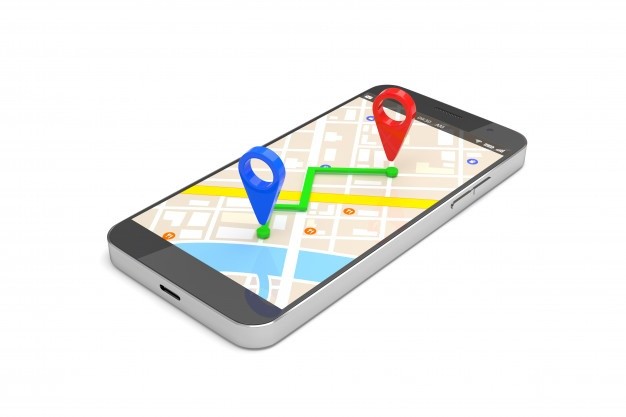The Benefits of Using a GPS Mobile Navigation App Designed for People with Visual Impairments

All three of the GPS navigation apps described in our <previous post> above offer or link to a full suite of the basic navigation features, including the ability to determine your current location, browse and search nearby POIs, set a favorite place, create a travel route to your destination, and find your way using turn-by-turn directions. They also provide enhanced functionality that can improve your orientation and mobility significantly.
The menu structure and controls may differ, but many if not most of the same blindness-aware features are available in all three apps.
Continuous and Automatic Current Location, Cross Street, and POI Announcements
They say the three main rules of real estate are “Location, location, location.” This can also be said of traveling with a cane or guide dog. You cannot find where you want to go unless you know where you are, and this isn’t information you only wish to know before you start your walk or bus trip—it’s information you need throughout your journey.
Apple Maps, Google Maps, and other standard GPS navigation apps will tell you where you are and what’s nearby anytime you wish, but getting this information means stopping and tapping icons, which can slow you down significantly. Blindness-aware navigation apps will announce this information at regular intervals as you move, or, if you prefer, whenever you shake your mobile phone.
You can instruct a blindness-aware navigation app to keep you updated on the compass direction in which you are heading. This can be extremely handy in orienting yourself in a busy downtown area, or when crossing a wide parking lot back to the street.
Standard turn-by-turn directions will alert you when it’s time to make a turn, but what about all those streets you need to cross between here and there? A blindness-aware navigation app will announce the distance to and the name of each cross street as you approach it. It will also announce nearby addresses from time to time so you know about how far down each block you have traveled, and whether your destination is on the left or right side of the street.
Sighted travelers can see all of the stores, office buildings, and other points of interest they pass along their journey. A blindness aware navigation app can offer you the same information. You can have all nearby POIs announced as you approach them, along with their distance and direction. You can also limit these announcements to various categories, such as banks and restaurants, or to places you have marked as favorites.
Looking Around to Get the Lay of the Land
Satellite maps and Google Street View offer sighted users a virtual tour of an area so they can get the lay of the land, either where they are or where they are going to be. Blindness-aware navigation apps offer the same functionality in accessible versions.
Each of the apps mentioned above includes a “Look Around” feature, which prompts your phone to speak the names, distances, and compass directions of all POIs within a range you set (yards to miles). Each of these apps also offers a “wand” mode. Enable this feature, and you can point the top of your phone in any compass direction and hear only the POIs located in that direction.
Nearby Explorer and the Seeing Eye GPS app also allow you to trace roadways with your finger using haptic feedback. Your phone will buzz and vibrate as you follow a road, announcing each new road and intersection, then stop when your finger veers off course.
These features are available for any location: current and future locations, along with any other location wish to explore from your phone. In this mode, your phone will act as though it is at the remote location, a mile away, or halfway across the country. You can use all of the look around, wand, and map exploration features the same as you can at home. Going to the doctor’s office? Use this handy feature to see if there is a coffee shop you can visit after your appointment. Traveling to New York for a business meeting? Locate your hotel and see the sights as you take a virtual walk around the neighborhood.
This article was written and published by the American Foundation for the Blind. <Click Here> to read the article in its entirety and access other helpful articles from AFB.
We Are Here To Bring Hope
If you or a loved one have been diagnosed with Macular Degeneration, we have prepared a 12-part eBook <Click here to download a PDF of the entire report.>
To learn more about how we can Bring Hope to people who are blind or with low vision, contact a Technology Specialist at New England Low Vision and Blindness to learn more. You can also call our toll free number 888-211-6933 or email us at info@nelowvision.com.
Our two(2) state-of-the-art technology showrooms are a wonderful resource, showcasing a variety of leading electronic low vision magnifiers and blindness products. You can schedule an appointment with one of our Technology Specialist who can help you find the right technology, training and care solution.
If you cannot come to us, our staff can even drive out and bring our Vision Store to you, for a no-obligation product demonstration. We offer a comprehensive line of products including electronic magnification low vision aids, blindness products, and leading low vision products for people with glaucoma, macular degeneration and other forms of vision loss.



